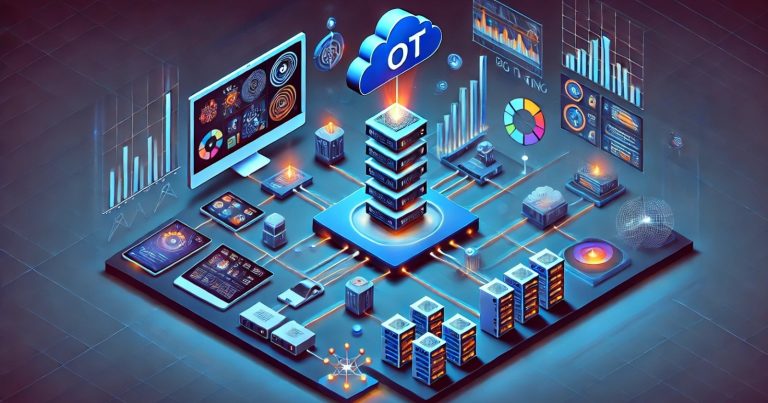Big data analytics in cloud computing refers to processing your data on cloud infrastructure in order to extract meaningful insights from large-scale data that has been analyzed. It enables enterprises to store, manage, and analyze huge data volumes using cloud-based services. This technology enables organizations to make data-driven decisions, enhance services, and lower costs. Organizations can leverage the features in cloud computing for big data analytics to enhance their flexibility, scalability, and capabilities. Knowing what cloud computing is and what big data analytics is is important in successfully using this combination.
What is Big Data Analytics in Cloud Computing?
Big data analytics in cloud computing is the process of examining large data sets, is the method of analyzing enormous amounts of data stored in cloud surroundings. It uses advanced analytics tools and algorithms to discover patterns, trends, and insights. During this process, organisations uncover intelligence regarding customer behaviour, market trends, and operational efficiency. With cloud computing services, you are able to scale these resources according to the need, thus handling big data volumes and velocity.
Understanding Cloud Computing in Big Data Analytics
Cloud computing enables big data run time analytics. It offers scalable storage, computing power, as well as networking on-demand. And 100G is extremely cheap, so businesses do not need to prepare an expensive infrastructure to invest it. Instead, they can do enter big data tools and platforms such as, Hadoop, Spark, and Amazon Redshift using cloud computing technology. Cloud and big data are seamlessly integrated, making data processing easier and analysis faster.
Features of Big Data Analytics in Cloud Computing
The big data analytics in cloud computing has several features that make it very beneficial for modern businesses. These capabilities enable organisations to process massive data sets quickly, accurately and safely. These characteristics make cloud computing in big data analytics an ideal solution for data-driven industries.
- Scalability: Cloud platforms scale for data volume and user needs. Allows businesses to scale seamlessly without falling apart. This adaptability provides businesses with the growth they need without physical infrastructure constraints.
- Cost-effectiveness: Cloud service is based on the pay-as-you-go model, Reducing high hardware and software upfront investments. Companies pay only for what they use.
- Real Time Data Processing: It evaluates and assesses the data from the moment it is received and proceeds using tools such as Apache Storm and Spark Streaming. Enables real-time decision-making in domains such as fraud detection or customer care. Flow through faster improves the responsiveness which increases the customer satisfaction.
- Roast Two: High Availability & Reliability (Resilience) – Cloud providers have redundancy & uptime guarantees. Ensures access to information and analytical capabilities. Automatic failover systems keep downtime to a minimum and speed at a maximum.
- Data Security and Backup: Sensitive data are protected with encryption, access control and regular backups. Is legally obliged to meet data protection standards like GDPR or HIPAA. Data is to be protected, so is stored data.
- Big Data Analytics Tool Integration: Compatability with various big data analytics tools like: Apache Hadoop, Apache Spark, Tableau, Google BigQuery, and Microsoft Power BI Analysis is better and reporting is faster with Easy integration.
Big Data Analytics in Cloud Computing
Big data analytics is widely utilized in cloud computing by organizations in all industries to gain a competitive advantage. It enables data analysis at all stages collection, storage, processing, and visualization. Using big data and cloud computing technology, organizations are now able to aggregate raw data and, with little technical overhead churn out actionable insights.
Applications Across Different Sectors
- Retail: Patterns of sales for a better product recommendation
- Healthcare: Tracks patient data and predicts disease trends.
- Finance: Detect fraud, assess credit risk and forecast stock movement.
- Education: monitors classroom progression and individualizes learning.
- Manufacturing: Improves supply chain efficiency and predicts machine failure.
Advantages of Using Big Data on Cloud Platforms
- Quick and Easy Deployment: Allows users to deploy big data environments quickly.
- Elastic Resources: These are used for dynamically allocating memory, storage, and computing.
- Accessibility: Teams from different regions can collaborate using cloud tools.
- Better Insights: Advanced big data analytics tools allow for better reporting and forecasting.
Popular Cloud Platforms for Big Data Analytics
- AWS (Amazon Web Services): EMR, Redshift, SageMaker
- Microsoft AzureHDInsight, Azure Machine Learning
- Google Cloud Platform (GCP): BigQuery, Dataproc, AutoML.
- IBM CloudSupports Watson and IBM Analytics Engine.
Big Data Analytics in Cloud Computing Cycle
Big data analytics in cloud computing cycle the process of a single step to analyze the big data on cloud platforms is represented through Big Data Analytics in Cloud Computing Cycle. Every stage converts raw data into actionable insights. Cloud computing can be useful in big data analytics, and this cycle allows for the ongoing learning of businesses via data, and for the adaptation to changes in trends.
Data Collection
Data collection in the data lifecycle. This process uses data from various sources, including websites, IoT devices, social media, and sensors. Services like AWS Kinesis or Google Cloud Pub/Sub are used to aggregate real-time data streams by organisations. With accurate data collection, organisations are able to make informed decision making and optimise operations.
Data Storage
After data has been collected, it is important to securely and efficiently store it. Companies use cloud platforms to store structured and unstructured data. Commonly used as storage solutions are Amazon S3, Google Cloud Storage, Azure Blob Storage, etc. These storage systems also enable you to store your data in a way that is scalable, secure, and searchable when needed.
Data Processing
Data processing is doing filtering, cleaning, and formatting techniques on raw data before doing analysis.This step ensures the data is clean and usable. Fast processing of large volumes of data is achieved through tools such as Hadoop MapReduce or Apache Spark. This fabulous abstraction makes a proper subtype of data processing more efficient.
Data Analysis
It uses machine learning, AI and complex statistical models to recognize valuable structures and trends within the values. And the standard tools (BigQuery, Tableau, Data Studio, etc.) are used by businesses to present that information in a digestible matter. Data can tell them about the latest customer behavior, allow them to make predictions in trends, and help them make smart business decisions.
Insight Generation
From the processed data, it generates actionable intelligence through reports, dashboards, and visual charts.These insights inform decision makers across marketing, finance and operations. Data-driven insights enable firms to maximize performance, discover opportunities, and address business issues more effectively—thus improving overall organizational efficiency.
Continuous Monitoring and Feedback
At this stage, enterprises monitor in real-time changes in data and the performance of data models. Providing feedback helps refine processes and improve the accuracy of the model over time. Through constant monitoring, companies can keep a finger on the pulse of their customers, mount an agile response to market fluctuations, and improve data-informed decision-making.
Relevance to ACCA Syllabus
Cloud computing big data analytics is relevant in the context of the strategic business leader (SBL) and advanced performance management (APM) papers on the ACCA syllabus. ACCA students need to realize how vital cloud based big data systems assist real-time decision making, financial forecasting, performance assessment and fraud detection. Such a thing is not only essential to the improvement of financial visibility but also allows professionals to fire big financial data across the entire spectrum, making cloud analytics great on both fronts.
Big Data Analytics in Cloud Computing ACCA Questions
Q1: How does big data analytics help in investment decision-making?
A) By leveraging historical data to predict stock price movements,
B) By removing the need for fundamental analysis,
C) By automating every single financial decision,
D) By not taking macroeconomic indicators into account
Ans: A) Through historical data predicting stock price movements
Q2) A major advantage of big data analytics is making investments through risk assessment.
A) It gives you realtime risk insights
B) It eliminates all investment risks.
C) It replaces portfolio managers .
D) It removes market volatility
Ans: A) It offers realtime risk insights
Q3: What big data analytics technique is commonly used for financial modelling?
A) Predictive Analytics
B) Realtime Analytics
C) Descriptive Analytics
D) Diagnostic Analytics
Ans: A) Predictive Analytics
Q4: What is a current emerging trend in big data analytics for financial markets?
A) AI-based portfolio optimization
B) Robots replacing human investors
C) Lack of risk management systems
D) Realtime financial data
Ans: A) AI-based portfolio optimization
Q5: What common big data analytics tool was used in portfolio management?
A) Python
B) Blockchain
C) Hadoop
D) Spark
Ans: A) Python
Relevance to US CMA Syllabus
The US CMA syllabus clearly intensifies the focus on cloud-based big data analytics (cloud-based data analytics), which supports myriad accounting domains such as performance management, decision analysis, and strategic management. CMAs use cloud analytics as tool for cost control, forecasting, variance analysis, and strategic budgeting. For a management accountant, knowledge of tools like Power BI and cloud storage systems augments the ability to interpret large datasets correctly.
Big Data Analytics in Cloud Computing CMA Questions
Q1: What are some advantages that big data analytics can offer for risk assessment? How do the auditor use it? A) Without journal entries,
B) By identifying abnormal transactions and patterns of fraud,
C) Through AI-generated summary, replacing financial reports,
D) By bringing about a transition from sample-based audits
Ans: B) By identifying unusual transactions and patterns of fraud
Q2: The data that are more significant when it comes to financial reporting is big data analytics.
A) The time to process the data is less
B) No accounting errors
Q) Human beings do not make decisions
D) No regulatory compliance
Ans: A) To take less time to process data
This is the last question for PART I of this quiz, the quiz on big data analytics.
A) Descriptive Analytics
B) Predictive Analytics
C) Prescriptive Analytics
D) Diagnostic Analytics
Ans: B) Predictive Analytics
Q4: What role does big data analytics play in tax compliance?
A) Automatic filing of tax returns
B) Compliance via real-time data scrutiny
C) Lower tax rates
D) Permanent fix to errors in taxation
Ans: B) Ensuring compliance through realtime data monitoring
Q5: What is data visualization used in big data analytics?
A) Hadoop
B) Tableau
C) SQL Server
D) Blockchain
Ans: B) Tableau
Relevance to US CPA Syllabus
The US CPA syllabus, of its several segments, namely – AUD: Audit & Attestation and BEC: Business Environment & Concepts, focuses on how big data & cloud technologies drive automated auditing, fraud detection & regulatory compliance. The training in how cloud analytics platforms enable much more efficient and accurate reporting processes is an advantage for CPAs.
Big Data Analytics in Cloud Computing CPA Questions
Q1: How does it help in cost control with big data analytics?
A) It aids in monitoring real-time cost patterns,
B) It calls for the termination of cost structures,
C) Providing automation across all finance processes,
D) All compliance with budget limitations
Ans: A) Monitor and track realtime cost trends
Q2. Which big data analytics technique could be used for demand forecasting in cost accounting?
A) Real-time Analytics
B) Prescriptive Analytics
C) Predictive Analytics
D) Diagnostic Analytics
Ans: C) Predictive Analytics
Question 3: What is the value of big data analytics in performance evaluation?
(A) Through predictions based upon previous outcomes
B) By decoupling performance-linked metrics
C) By exaggerating the importance of managerial choices
D) By emphasizing solely on financial reports
Ans: A) Anticipating events using past data
Q4: Which type of big data analytics tool you utilize in Business Intelligence to manage cost?
A) Apache Spark
B) Tableau
C) Python
D) Blockchain
Ans: B) Tableau
Q5: One of the biggest benefits of big data analytics is variance analysis.
A) Quicker detection of cost deviations
B) No variance in budgets
C) Elimination of cost overruns
D) Removal of all operational expenditure
Ans: A) Speeding up of cost deviation identification
Relevance to CFA Syllabus
Big data analytics in cloud computing enables analysts and investors to gain deeper insights into financial metrics, market movements, and portfolio risk, allowing them to be used in the CFA curriculum focused on portfolio management and financial reporting. Real-time financial modelling and investment tracking with huge datasets is possible in cloud-based systems.
Big Data Analytics in Cloud Computing CFA Questions
Q1: How can big data analytics improve financial audits?
A) Using rapid detection of fraudulent transactions
B) By substituting auditors via AI models
C) By wiping all financial reporting errors
D) Automation of final audit reports
Ans: A) Quickly detection of fraudulent transactions
Q2: What is one of the key benefits of having big data analytics in tax reporting?
A) It is a tax-free package
B) It automates tax fraud detection
C) It guarantees no tax penalty
D) It eliminates all tax obligations
Ans: B) To automate tax fraud detection
Q3: What is the most effective analytics method for identifying fraudulent activity in financial statements?
A) Skills of data future
B) Descriptive Analytics
C) Prescriptive Analytics
D) Predictive Analytics
Ans: B) Predictive Analytics
Q4: What is an important benefit of AI for financial auditing?
A) Reviewing thousands of transactions for inconsistencies
B) Replacing human auditors
C) Financial reporting 100% automated
D) Detracting from the importance of compliance
Ans: A) Scanning to thousands of transactions for inconsistencies
Q5: The implementation of big data analytics in CPA firms poses one of the challenges?
A) All the above
B) Data security issues
It trains you on data until October 2023.
D) Don’t require insights from data analysis
Ans: A) Data security risks


